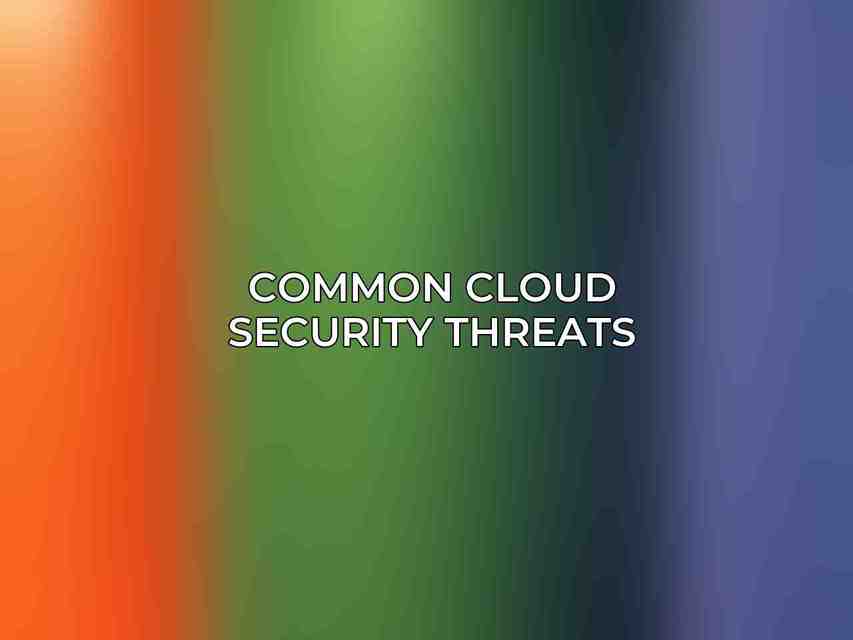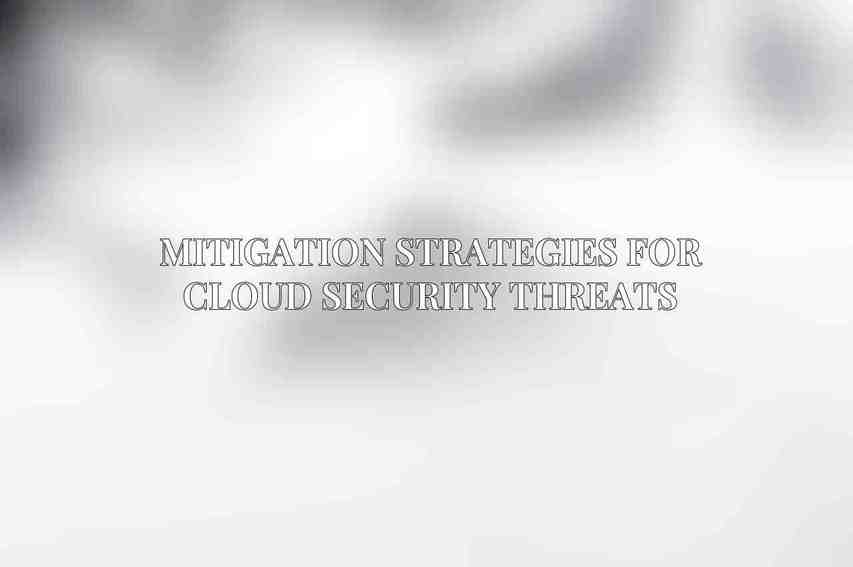Cloud computing has revolutionized the way businesses operate by providing flexibility, scalability, and cost-effectiveness. Companies worldwide are leveraging cloud services to enhance their operations and streamline processes. However, with the adoption of cloud technology comes the increased risk of cyber threats. The evolving world of cloud security threats poses significant challenges to enterprises, requiring robust measures to safeguard sensitive data and maintain business continuity.
Cloud security breaches can have devastating consequences for organizations, including financial losses, reputational damage, and legal ramifications. The impact of these breaches extends beyond just the immediate financial costs, potentially leading to long-term repercussions that could threaten the viability of the business. As cybercriminals become more sophisticated in their tactics, enterprises need to stay ahead of the curve in implementing effective security measures to protect their assets and data.
Common Cloud Security Threats

A. Data breaches and exfiltration
Data breaches remain a significant concern for enterprises storing sensitive information in the cloud. Malicious actors exploit vulnerabilities to gain unauthorized access to data, compromising confidentiality and integrity. Implementing robust data encryption techniques and access controls is crucial to mitigate the risk of data breaches.
B. Infrastructure hijacking and malware
Hackers may attempt to hijack cloud infrastructure or deploy malware to disrupt operations and steal valuable data. By compromising virtual machines or exploiting misconfigurations, threat actors can infiltrate the cloud environment. Continuous monitoring, regular security assessments, and timely patching are essential to prevent infrastructure hijacking and malware attacks.
C. Denial of service (DoS) and distributed denial of service (DDoS) attacks
DoS and DDoS attacks can cripple cloud services by overwhelming network resources and rendering systems inaccessible. Enterprises must implement robust network segmentation, deploy firewalls, and utilize DDoS mitigation services to defend against these disruptive attacks and ensure business continuity.
D. Insider threats and compromised accounts
Insider threats pose a significant risk to cloud security, as authorized users with malicious intent can exploit their permissions to exfiltrate data or disrupt operations. Implementing stringent access controls, conducting regular user activity monitoring, and providing security awareness training are essential in mitigating insider threats.
E. Compliance violations and regulatory risks
Non-compliance with industry regulations and data protection laws can result in severe penalties and legal consequences for enterprises. To mitigate compliance risks, organizations must adhere to regulatory requirements, conduct regular audits, and implement security controls aligned with relevant standards such as HIPAA and GDPR.
Mitigation Strategies for Cloud Security Threats

Effective mitigation of cloud security threats requires a multi-faceted approach encompassing various strategies across different layers of security.
A. Data Protection
- Data Encryption at Rest and in Transit
- Utilize encryption protocols to protect data both in storage and during transmission.
- Access Control and Identity Management
- Implement strong access controls and identity verification mechanisms to restrict unauthorized access.
- Data Masking and Tokenization
- Conceal sensitive data through masking techniques and tokenization to prevent exposure.
- Data Backup and Recovery Plans
- Establish data backup procedures and recovery plans to mitigate the impact of data loss incidents.
B. Infrastructure Security
- Network Segmentation and Firewalls
- Segment networks to isolate critical assets and deploy firewalls to control traffic flow.
- Intrusion Detection and Prevention Systems (IDS/IPS)
- Deploy IDS/IPS solutions to monitor network activities and detect potential security breaches.
- Security Information and Event Management (SIEM)
- Utilize SIEM tools to centralize security event logs and proactively identify security incidents.
- Vulnerability Management and Patching
- Regularly scan for vulnerabilities, apply patches, and update software to address security flaws.
C. Threat Detection and Response
- Security Monitoring and Alerting
- Implement continuous monitoring tools to detect suspicious activities and trigger alerts.
- Incident Response Planning and Execution
- Develop incident response plans outlining procedures to mitigate security incidents efficiently.
- Log Analysis and Forensic Investigation
- Conduct thorough log analysis and forensic investigations to understand the scope and impact of security breaches.
- Threat Intelligence and Threat Hunting
- Leverage threat intelligence feeds and conduct proactive threat hunting to identify potential threats before they materialize.
D. Compliance and Governance
- Regulatory Compliance Assessments
- Conduct regular assessments to ensure compliance with industry regulations and data protection laws.
- Cloud Security Best Practices and Frameworks
- Adhere to established security frameworks such as CIS and NIST to bolster security posture.
- Security Policy Development and Enforcement
- Develop comprehensive security policies and enforce adherence across the organization.
E. Cloud Service Provider Responsibilities
- Shared Security Model and Cloud Provider Obligations
- Understand the shared responsibility model and the security obligations of cloud service providers.
- Due Diligence and Vendor Risk Management
- Perform due diligence when selecting cloud vendors and establish robust vendor risk management processes.
- Cloud Provider Security Certifications and Audits
- Verify cloud providers’ security certifications and regularly audit their security controls to ensure compliance.
Best Practices for Cloud Security
As part of an effective cloud security strategy, organizations should consider the following best practices:
A. Adopt a Zero-Trust Security Model
Implementing a zero-trust approach ensures that no entity, whether inside or outside the organization, is inherently trusted. Every access request is authenticated, authorized, and continuously validated, reducing the risk of unauthorized access.
B. Implement Multi-Factor Authentication (MFA)
Enabling MFA adds an extra layer of security by requiring users to provide multiple forms of verification before accessing sensitive data or resources, reducing the likelihood of unauthorized access through compromised credentials.
C. Enforce Strong Password Policies and Password Managers
Establishing strong password policies, including regular password rotations, complexity requirements, and prohibiting password reuse, coupled with password managers, enhances the security of user credentials and mitigates the risk of unauthorized access.
D. Use Encryption for All Data and Communications
Encrypting all data at rest and in transit ensures that even if data is intercepted, it remains unintelligible to unauthorized parties, safeguarding confidentiality and maintaining data integrity.
E. Regularly Monitor and Secure Cloud Environments
Continuous monitoring of cloud environments, coupled with regular security assessments and updates, helps identify vulnerabilities proactively and enhances overall security posture to prevent potential breaches.
F. Educate Employees on Cloud Security Best Practices
Employee awareness and training on cloud security best practices play a crucial role in mitigating human error and fostering a security-conscious culture within the organization. Regular training sessions can help employees recognize potential security threats and respond appropriately.
the evolving world of cloud security threats requires enterprises to remain vigilant and proactive in implementing robust security measures. By understanding common cloud security threats and adopting appropriate mitigation strategies, organizations can safeguard their data, maintain compliance, and protect their reputation. Ongoing innovation in cloud security practices and a commitment to staying abreast of emerging threats are essential for ensuring the resilience of cloud environments in the face of evolving cybersecurity challenges.
For further information on cloud security best practices and tools, you may refer to Microsoft Azure Security and Amazon Web Services Security.
Frequently Asked Questions
What are common cloud security threats for enterprises?
Common cloud security threats for enterprises include data breaches, account hijacking, insecure APIs, DDoS attacks, and misconfigured cloud storage.
How can enterprises identify cloud security threats?
Enterprises can identify cloud security threats by implementing security monitoring tools, conducting regular security audits, staying informed about new threats, and training employees on security best practices.
What are some best practices for mitigating cloud security threats?
Some best practices for mitigating cloud security threats include encrypting sensitive data, implementing strong access controls, using multi-factor authentication, regularly updating security policies, and performing regular security assessments.
Why is it important for enterprises to prioritize cloud security?
Prioritizing cloud security is crucial for enterprises to protect sensitive data, maintain customer trust, comply with regulations, prevent financial losses, and safeguard their reputation.
How can enterprises stay proactive in addressing evolving cloud security threats?
Enterprises can stay proactive in addressing evolving cloud security threats by continuously monitoring their systems, investing in cybersecurity training, staying up-to-date on the latest security trends, and collaborating with security experts and vendors.

